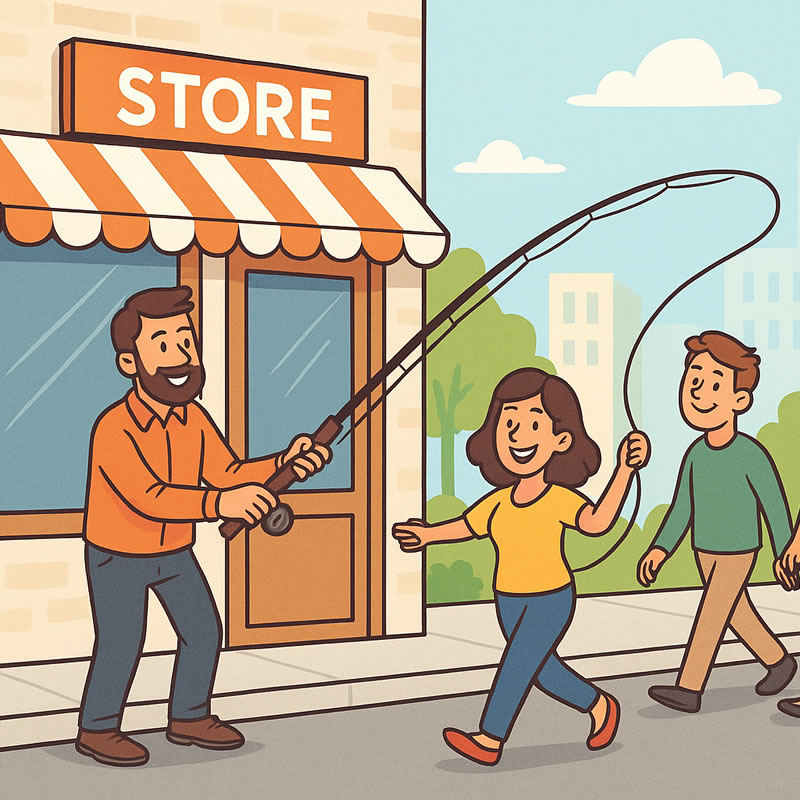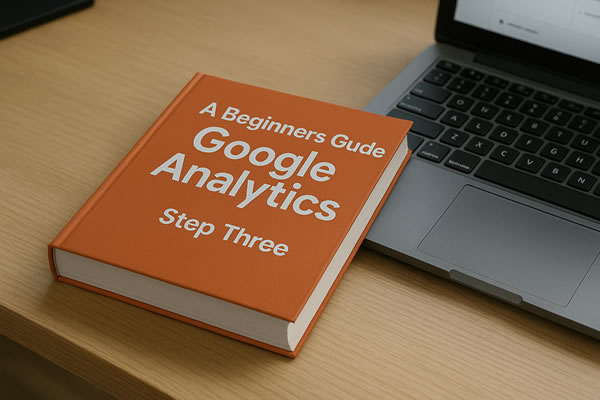
So, your website is sitting comfortably on page one of Google.
You’ve done the hard yards, ticked all the SEO boxes, and your ranking is looking as pretty as a flathead fillet on a Friday night. And yet… the traffic is slower than a tinny with a half-flat battery. If you’ve ever wondered why your shiny, well-ranked website isn’t reeling in the hordes, here’s the truth: the search engine isn’t the whole ocean. It’s just one fishing spot. And sometimes, the fish are biting somewhere else.
This is where social media comes in – the bait, the burley, the flashy lure that gets even the fussiest snapper to turn its head.
Facebook – The Easy Bait
Think of Facebook as the old reliable bait you chuck in the water when nothing else is working. It’s the pilchard of the digital world. Not glamorous, but it gets the job done.
Your potential clients are scrolling Facebook while waiting for coffee, pretending to work, or trying to avoid eye contact in the doctor’s waiting room. They’re relaxed, distracted, and primed to nibble.
Post regularly. Share your latest offers, quick tips, behind-the-scenes updates – anything that gets a bite. Include a link back to your website every time. That link is your hook. The post is just the shiny thing that gets them swimming your way.
And don’t be shy about boosting posts. For the price of a servo pie, Facebook will drop your bait right in front of people who would never have found you through Google alone.
Instagram – The Shiny Lure
If Facebook is pilchard, Instagram is the soft plastic lure with the glittery tail. It’s colourful, it’s eye-catching, and it needs to look good to work.
Your audience on Instagram is a bit like coral trout – they go for the pretty things. So give them something worth biting. High-quality photos of your work, graphics, short videos, stories – make it slick, make it sharp, make it irresistible.
But here’s the trick: don’t let Instagram become a dead-end. Every pretty picture should point back to your website. Add the link to your bio, use stickers in Stories, and tell people outright – “Want more? Hit the website.” You’re not just showing off your lure; you’re guiding them straight into the esky.
LinkedIn – The Big-Game Rod
LinkedIn is where you gear up for the bigger fish. The serious ones. The kind that read business articles for fun and use words like “leverage” without irony.
This platform isn’t about glossy photos – it’s about authority. Expertise. You showing the world that you know your stuff better than a barra knows how to dodge a hook.
Write posts about your industry. Share your wins. Explain things your clients don’t understand yet. Comment on other people’s posts like a calm, confident pro. Every action tells people you’re the person they should trust.
And once again, steer them back to your website. LinkedIn users don’t bite quickly, but when they do, they’re often the fattest fish in the river.
Social Media Isn’t Optional – It’s the Burley Trail
Many business owners say, “But I already have good Google rankings.” Yes, fantastic. But ranking alone won’t fill the boat. People won’t always search for what you do. Sometimes they need a nudge, a reminder, a shiny thing drifting past their nose.
Social media is how you scatter that burley trail across the water. It keeps your brand visible. It nudges people back to your website. And, best of all, it works even when you’re not posting SEO-friendly paragraphs about meta descriptions and schema markup.
Think of your website as the landing net. It’s where the catch ends up. But social media – that’s the bait, the lures, and the scent trail that gets them close enough to scoop.
Time to Reel Them In
If your website isn’t getting the traffic it deserves, stop treating social media like an optional extra. It’s not. It’s part of the fishing kit.
Treat each platform like a different lure, throw your line often, keep the bait fresh, and always – ALWAYS – point everything back to your website.
Do that, and you won’t just get nibbles. You’ll be hauling in clients like it’s peak barra season.










